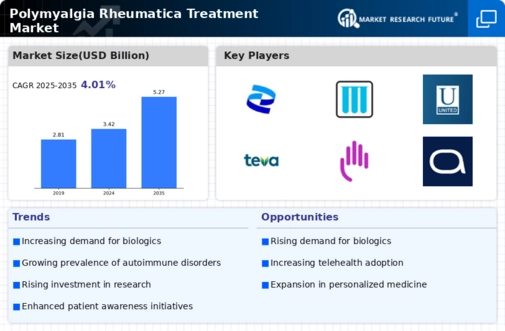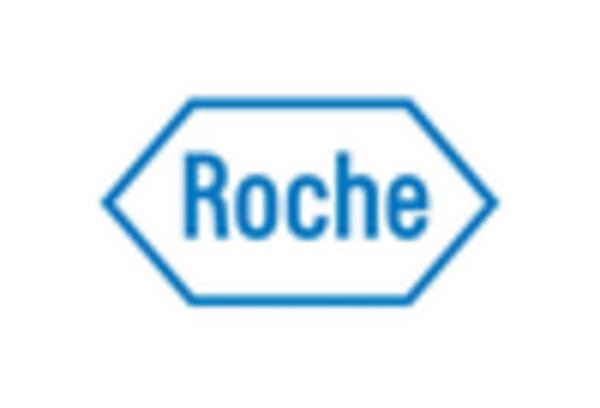Aging Population
The increasing prevalence of Polymyalgia Rheumatica among the aging population is a notable driver for the Polymyalgia Rheumatica Treatment Market. As individuals age, the likelihood of developing autoimmune disorders rises, leading to a higher demand for effective treatment options. According to recent data, the incidence of Polymyalgia Rheumatica is particularly pronounced in individuals over the age of 50, with estimates suggesting that approximately 1 in 1,000 people in this demographic may be affected. This demographic shift necessitates a robust response from healthcare providers and pharmaceutical companies, thereby propelling growth within the Polymyalgia Rheumatica Treatment Market. The focus on geriatric care and the need for tailored treatment regimens further underscores the importance of addressing this condition in an aging society.
Integration of Telemedicine
The integration of telemedicine into healthcare practices is emerging as a significant driver for the Polymyalgia Rheumatica Treatment Market. Telehealth solutions facilitate remote consultations, enabling patients to access care without the need for in-person visits. This is particularly beneficial for individuals with mobility issues or those living in remote areas. The convenience and accessibility offered by telemedicine can lead to increased patient engagement and adherence to treatment plans. As healthcare systems continue to adopt digital solutions, the Polymyalgia Rheumatica Treatment Market is likely to see a rise in telehealth services tailored specifically for managing this condition, potentially improving patient outcomes and satisfaction.
Rising Awareness and Diagnosis
Increased awareness and improved diagnostic capabilities are significantly influencing the Polymyalgia Rheumatica Treatment Market. Healthcare professionals are becoming more adept at recognizing the symptoms associated with this condition, which often leads to earlier diagnosis and treatment. Enhanced education initiatives and outreach programs have contributed to a greater understanding of Polymyalgia Rheumatica among both patients and providers. As a result, the number of diagnosed cases is on the rise, which in turn drives demand for effective treatment options. Market data indicates that the number of diagnosed cases has increased by approximately 20% over the past five years, highlighting the critical role of awareness in shaping the Polymyalgia Rheumatica Treatment Market.
Advancements in Treatment Modalities
The continuous advancements in treatment modalities for Polymyalgia Rheumatica are a key driver of the Polymyalgia Rheumatica Treatment Market. Recent developments in pharmacological therapies, including the introduction of novel corticosteroids and biologics, have expanded the therapeutic landscape for managing this condition. These innovations not only improve patient outcomes but also enhance the quality of life for those affected. Furthermore, clinical trials are ongoing, exploring new treatment combinations and approaches, which may lead to more effective management strategies. The introduction of these advanced therapies is expected to contribute to a projected market growth rate of approximately 5% annually over the next five years within the Polymyalgia Rheumatica Treatment Market.
Growing Research and Development Investments
The growing investments in research and development (R&D) for autoimmune diseases, including Polymyalgia Rheumatica, are propelling the Polymyalgia Rheumatica Treatment Market. Pharmaceutical companies and research institutions are increasingly allocating resources to explore the underlying mechanisms of this condition and to develop innovative therapies. This trend is driven by the recognition of the unmet medical needs within the autoimmune disorder landscape. Recent reports indicate that R&D spending in this sector has increased by over 15% in the last two years, reflecting a commitment to advancing treatment options. As new therapies emerge from these investments, the Polymyalgia Rheumatica Treatment Market is poised for substantial growth, addressing the needs of patients more effectively.

















Leave a Comment